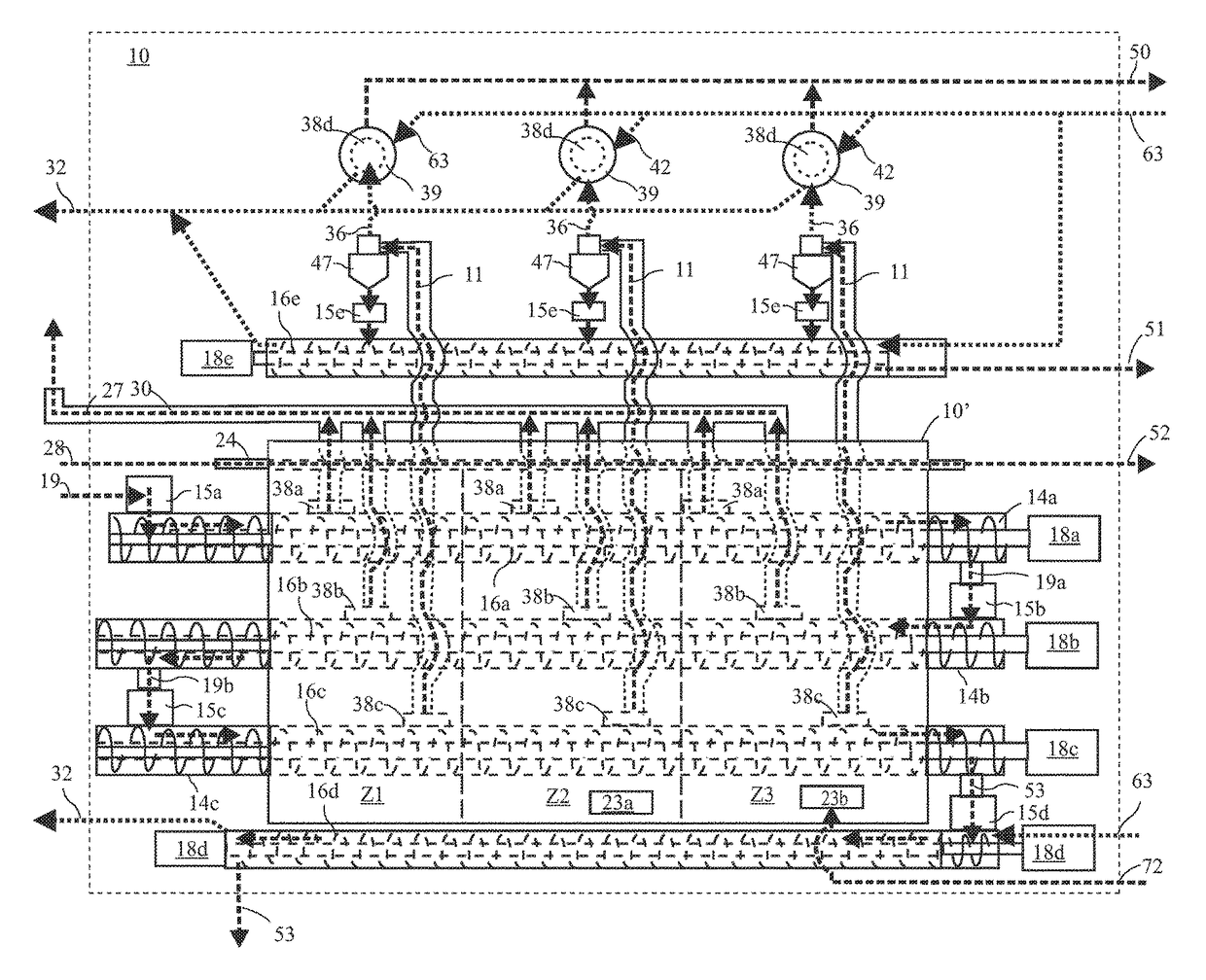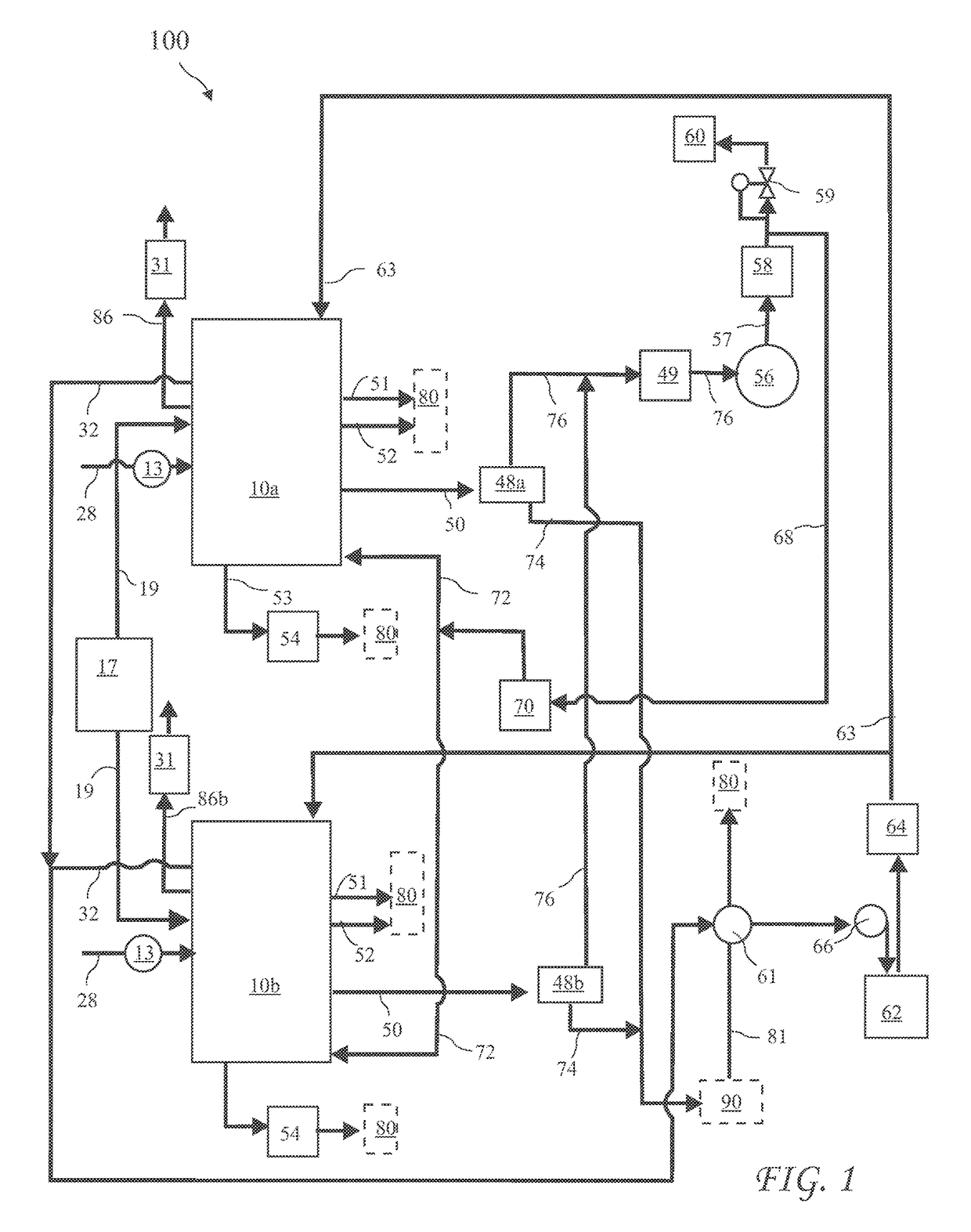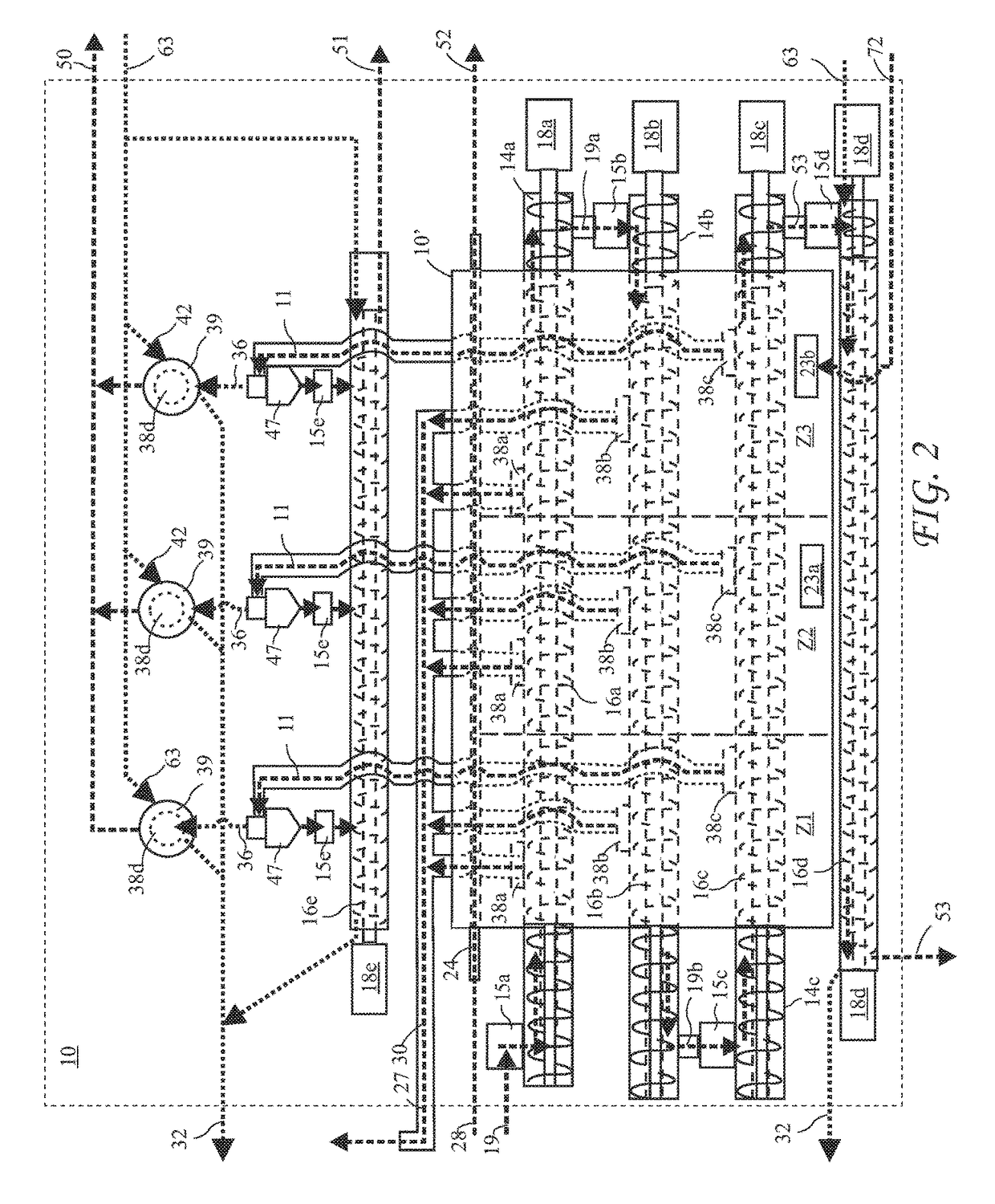Method to produce charcoal without producing bio oil through pyrolysis of woody biomass
a woody biomass and pyrolysis technology, applied in the field of methods, can solve the problems of increasing consuming significant energy, and producing unwanted oil, and achieves the effects of optimizing process heat demand, reducing the foot print of plants, and reducing the cost of processing biomass materials
- Summary
- Abstract
- Description
- Claims
- Application Information
AI Technical Summary
Benefits of technology
Problems solved by technology
Method used
Image
Examples
Embodiment Construction
[0032]The following description is of the best mode presently contemplated for carrying out the invention. This description is not to be taken in a limiting sense, but is made merely for the purpose of describing one or more preferred embodiments of the invention. The scope of the invention should be determined with reference to the claims.
[0033]Where the terms “about” or “generally” are associated with an element of the invention, it is intended to describe a feature's appearance to the human eye or human perception, and not a precise measurement.
[0034]A biomass processing system 100 according to the present invention is shown in FIG. 1. The biomass processing system 100 includes two pyrolysis systems 10a and 10b, both fed green raw sawdust 19 stored in a bin 17. The pyrolysis systems 10a and 10b further receive ambient air 28, cooling water 63, and process gas 72. Prior to entering the heat exchangers 24, the air 28 may be pre heated by steam captured from the condensers 38 and ad...
PUM
| Property | Measurement | Unit |
|---|---|---|
| temperature | aaaaa | aaaaa |
| temperature | aaaaa | aaaaa |
| temperature | aaaaa | aaaaa |
Abstract
Description
Claims
Application Information
 Login to View More
Login to View More - R&D
- Intellectual Property
- Life Sciences
- Materials
- Tech Scout
- Unparalleled Data Quality
- Higher Quality Content
- 60% Fewer Hallucinations
Browse by: Latest US Patents, China's latest patents, Technical Efficacy Thesaurus, Application Domain, Technology Topic, Popular Technical Reports.
© 2025 PatSnap. All rights reserved.Legal|Privacy policy|Modern Slavery Act Transparency Statement|Sitemap|About US| Contact US: help@patsnap.com



